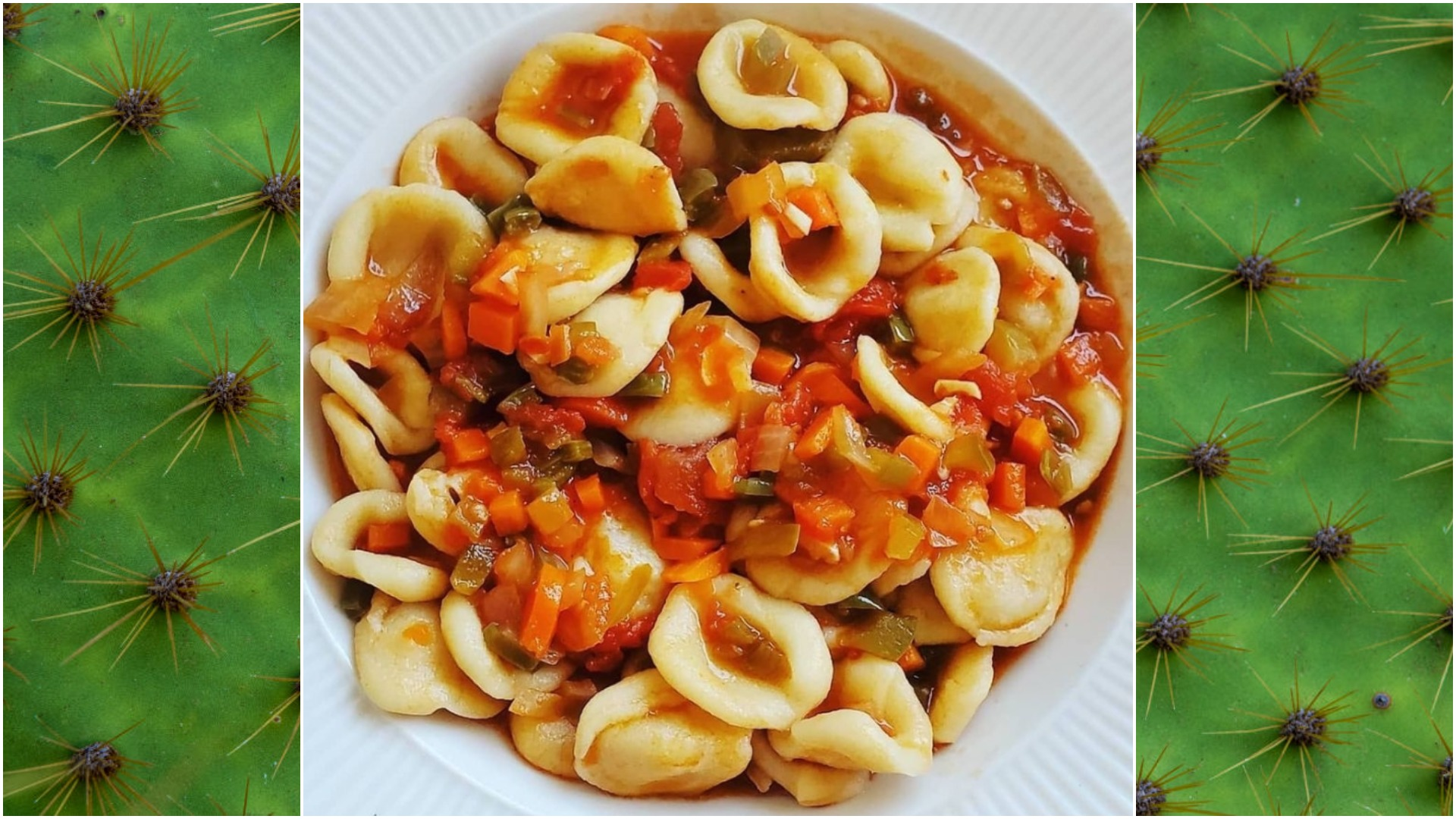Look, I'm Not The Boss Of You, But You Should Put Cactus In Your Pasta Sauce
Give the prickly desert succulent a chance—it has huge flavor.
My love of cactus can be attributed to living in Austin, Texas, where nopales and eggs are sold at nearly every taco stand. Friends who grew up in the area talk about nopales as something of an acquired taste; cactus, after all, emits a slime when cooking it (much like okra) that can be a little off-putting to a young person. But if you're a fan of bold flavor, nopales deliver.
Cactus is one of those unsung ingredients that should be in everything. Its tart, lemony flavor can shape an entire dish: I often use it in a soffritto (finely chopped and cooked carrot, celery, and onion) to build flavor in a sauce or ragu. Think of it like a tart bell pepper, and from there you can substitute it into your favorite dishes. Pair it with a sausage sandwich stewed with red sauce and onions, finished with mozzarella cheese. Throw it in salads, or on a breakfast plate, or even serve it breaded and fried. We have yet to scratch the surface of cactus' potential as an ingredient in American cooking outside of the Southwest.
Pasta is my favorite way to use cactus. I use the plant to construct a sugo finto, or "fake sauce" in Italian. Fake sauce is typically made by dicing a bunch of vegetables and stewing them in tomatoes to form a sort of chunky vegetarian bolognese. In my recipe, I chop cactus and cook it separately, then add it to a bouquet of soffritio: sweet carrot, aromatic garlic, crispy bell pepper, biting onion, and bitter cactus work together to form a substantial and tasty sauce.
The addition of emulsifying olive oil near the end of cooking also gives everything a nice, voluptuous sheen. Plus, not that it matters, but this recipe is 100% vegan if you choose to use an eggless pasta. Sugo Finto is a great dish to blow out things in your fridge, so feel free to adjust this recipe as much as you want. Add some chiles, sweet onions, more bell peppers, whatever you'd like. It's freestyle, dutch oven cooking, which is my favorite.
Sugo Finto “Fake Sauce”
- 2 cactus paddles, cleaned and ready to go (see note)
- 3 carrots
- 1 bell pepper
- 1 medium white onion
- 1 shallot
- 5 cloves of garlic
- 1 can of whole plum tomatoes
- ¼ cup olive oil, plus a few extra tablespoons as needed
- Salt and pepper
(Note: You can buy cactus paddles already cleaned and with the spines removed. The "spines" are the prickly little son of a guns that have caused so many cartoon character's anguish. If you buy them with the spines on, don't worry; you can easily scrape them off with a knife.)
The name of the game here is to chop all of your vegetables into the same small dice. Think ground meat. The carrot, bell pepper, onion, shallot, and garlic can be chopped ahead of time and put into bowls until you're ready to make your sauce. This meal is a lot of knife work, but it's worth it.
Chop the cactus into the same small dice as the rest of your vegetables. Put a pan on medium heat and add a tablespoon of olive oil. Add the cactus. Salt generously (about a teaspoon) and cook for 15-20 minutes. You will see the cactus get a little slimy, but that will dissipate. Cook until the cactus is relatively dry and has a nice olive green color. Remove the cactus from the heat and set aside.
Next, add a tablespoon of olive oil to a dutch oven over medium heat. Add the carrot first and sprinkle some salt, about half a teaspoon. Once the carrot is soft, add the bell pepper and cook until it is also soft, about 2 minutes. Now, push the carrot and bell pepper to the edges of the dutch oven, making a well in the center, and add the onion and shallot. Add more olive oil if things are looking a bit dry. Stir and cook in the center until it is translucent and fragrant, about 2-3 minutes. Now, make another well in the center and add your garlic. Cook until its harsh qualities are removed, but not too brown (another 2 minutes). Stir everything and let cook for another minute.
Now, add your can of plum tomatoes. Crush them with your hands over the dutch oven like your grandma would. Stir and season with salt and pepper. Bring to a high simmer, stir, then cook for 30 minutes on medium heat, stirring every so often, making sure the sauce never boils.
After 30 minutes, take a few tablespoons of olive oil and emulsify it into your sauce. The olive oil gives this dish a nice, substantial flavor.
Serve with your favorite pasta, but I think orecchiette works best. Watch me make this dish in the video above!
